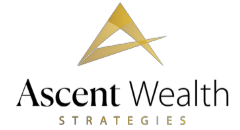Succession Planning: Strategies for Equalizing Estate Among Heirs
For business owners, planning the succession of your enterprise and the division of your estate among heirs presents a unique set of challenges and opportunities. This is especially true when attempting to balance the interests of heirs who may have different levels of involvement in the business. Here, we delve deeper into the strategies you can employ to ensure a smooth transition and fair distribution of assets.
Understanding the Value of a Robust Succession Plan
The backbone of successful transition and estate equalization is a robust succession plan. This goes beyond simply identifying who will take over business operations. It involves a holistic approach that considers the financial implications, timeline, tax consequences, and potential adjustments necessary down the line.
Suppose one of your children is positioned to take over the business. In this case, clearly defining the succession timeline, objectives, and methods of transfer allows you to put in place a flexible and tax-efficient plan. This approach not only streamlines the transition process but also minimizes tax implications, thus preserving the wealth of your estate.
However, your succession plan shouldn't be set in stone. The ability to adjust the plan provides room to accommodate changing circumstances or consider alternative exit strategies if they become more attractive. By creating the plan sooner rather than later, you'll have the flexibility to make strategic decisions about cash flow, debt service, and business growth, enhancing the financial stability of your business and family.
Addressing the Challenges of Equity Division
In situations where not all of your children are involved in the business, dividing equity equally can lead to potential conflicts. Splitting ownership between children active in the business and those who aren't can create tension and disrupt business operations.
Instead, consider strategies for equalizing your estate that don't involve dividing business equity. For instance, non-business assets like real estate, investment portfolios, or cash reserves could be allocated to children not active in the business. This can provide an equitable inheritance without stirring the challenges of divided business control.
The Role of Estate Planning and Life Insurance
Estate planning and life insurance are two powerful tools for equalizing your estate. An estate plan can detail how each child's inheritance will be structured, incorporating a mix of assets to achieve a balanced distribution. For instance, the child taking over the business might receive a larger portion of their inheritance in the form of business assets, while others might receive a greater share of liquid assets, real estate, or investments.
Life insurance, on the other hand, can create liquidity outside of the business, providing a source of wealth to balance inheritances. Proceeds from life insurance policies can be directed to heirs not involved in the business, helping to offset the value of the business transferred to active heirs. Moreover, as life insurance proceeds are usually tax-free, they can significantly enhance the value of your estate without increasing the heirs' tax burden.
Considering a Family Limited Partnership
Another strategic tool that can be valuable in estate equalization is a Family Limited Partnership (FLP) or Family Limited Liability Company (LLC). These structures allow you to transfer business assets into the FLP or LLC, then distribute partnership or membership interests to your heirs. FLPs and LLCs can offer several benefits, including the potential for valuation discounts, creditor protection, and the ability to retain control while gradually transferring wealth.
Navigating the complexities of succession planning and estate equalization requires careful thought, strategic planning, and regular reevaluation. Collaborating with a team of trusted advisors, such as a financial advisor, tax professional, and estate attorney, can provide the expertise needed to guide this process. The goal is to ensure a fair and tax-efficient distribution of assets, a seamless business transition, and a sustainable future for both your business and your family. Remember, every family and business situation is unique, so your succession plan should be tailored to meet your specific circumstances and objectives.
Ascent Wealth Strategies provides strategies for financial/estate and/or tax planning. These strategies do not constitute tax or legal advise. Consult legal or tax professionals for specific information regarding your individual situation.
Clear Creek Financial Management, LLC dba Ascent Wealth Strategies is a Registered Investment Advisor. This case study is solely for informational purposes. Advisory services are only offered to clients or prospective clients where Clear Creek Financial Management, LLC and its representatives are properly licensed or exempt from licensure. Past performance is no guarantee of future returns. Investing involves risk and possible loss of principal capital. No advice may be rendered by Clear Creek Financial Management, LLC unless a service agreement is in place.
